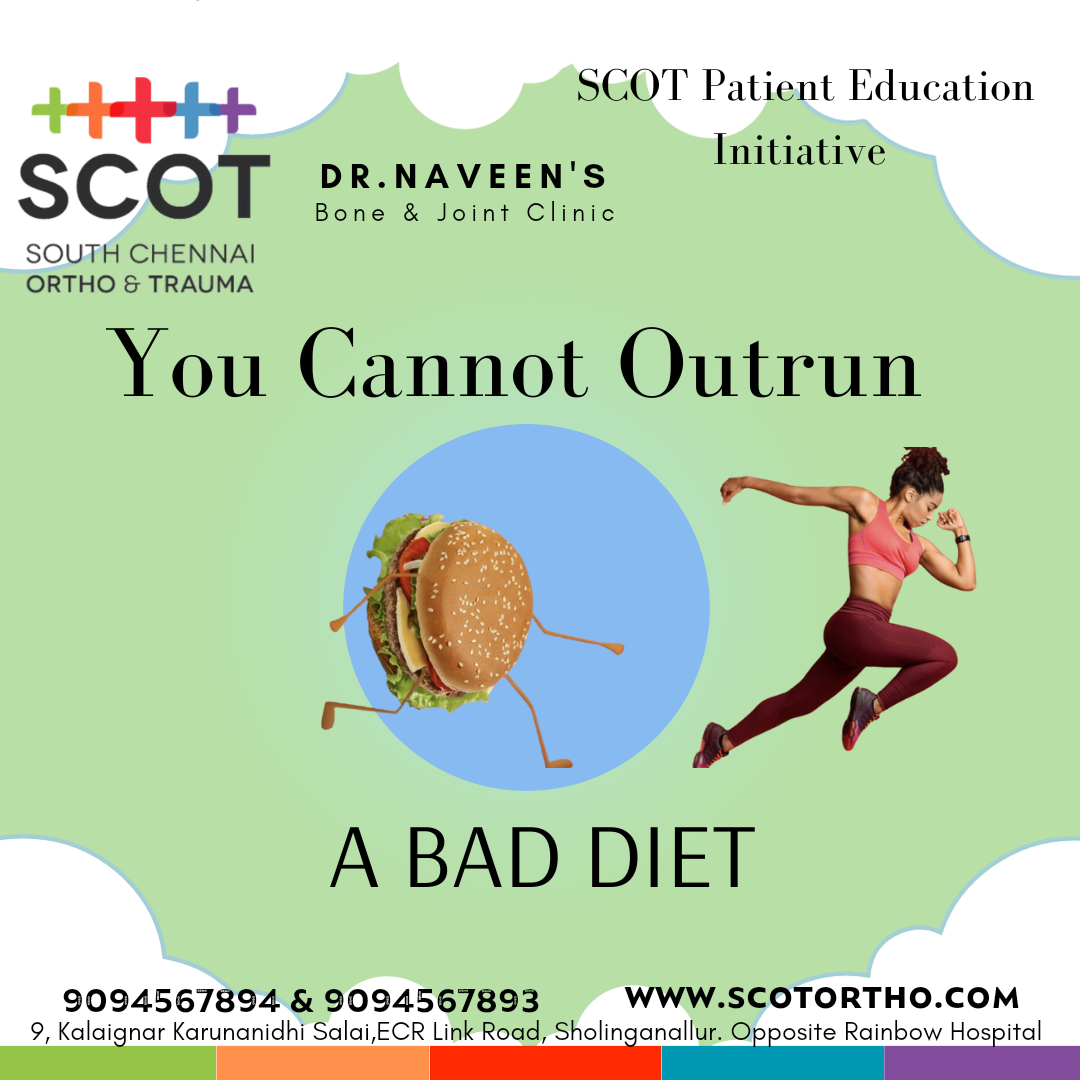You Can't Outrun a Bad Diet: Embracing a Holistic Approach to Health
In the fitness world, the adage "You can't outrun a bad diet" is often thrown around, but what does it really mean? Well, it's simply a reminder that no matter how much you exercise, if your diet is consistently unhealthy, it's going to outweigh any positive effects from your workouts.
Think of it like this: your body is a machine, and food is the fuel that keeps it running. If you put in low-quality fuel, your machine isn't going to perform at its best. It might sputter, stall, or even break down altogether.
Exercise, on the other hand, is like maintenance for your machine. It helps you get the most out of your fuel and keep your body running smoothly. But even the best maintenance can't make up for the damage caused by low-quality fuel.
Here's why:
The Calorie Math
At the heart of this whole "bad diet vs. exercise" debate is the concept of energy balance. Basically, our bodies burn calories throughout the day, and we replenish those calories by eating. If we consistently eat more calories than we burn, we gain weight.
Exercise helps us burn more calories, but the number of calories burned through exercise is relatively small compared to the number of calories consumed through diet. For example, a single serving of a fast-food burger can easily contain over 500 calories, an amount that would require a significant amount of exercise to burn off.
The Quality Counts
It's not just about the number of calories you eat; it's also about the quality of those calories. A diet rich in processed foods, sugary drinks, and excessive saturated and trans fats is like putting low-octane fuel in your car. It might get you going, but it's not going to do your engine any favors in the long run.
On the other hand, a diet rich in whole, unprocessed foods, such as fruits, vegetables, whole grains, and lean proteins, is like putting high-quality fuel in your car. It gives your body the nutrients it needs to function optimally, boost energy levels, and enhance the body's ability to repair and protect itself.
Striking the Balance
So, what's the answer? Do we just give up on exercise and eat whatever we want? Of course not! Exercise is still an important part of a healthy lifestyle. It helps us maintain a healthy weight, strengthen our bones and muscles, improve our mood, and reduce the risk of chronic diseases.
The key is to strike a balance between nutrition and exercise. A balanced approach involves making informed food choices, prioritizing whole, unprocessed foods, and limiting intake of processed foods, sugary drinks, and excessive fats. Additionally, incorporating regular physical activity into one's daily routine is essential for promoting overall well-being.
Making the Shift
Adopting a healthier lifestyle may require some gradual changes and adjustments, but the long-term benefits are undeniable. By prioritizing a balanced diet and incorporating regular exercise, individuals can enhance their physical and mental well-being, reduce the risk of chronic diseases, and improve their overall quality of life.
Remember, health is not a destination but a journey. Embrace the process, make informed choices, and cultivate a healthy relationship with food and exercise. Together, we can move towards a healthier, happier, and more fulfilling life.
SCOT : Dr. Naveen's Bone and Joint Clinic, Sholinganallur.
9094567894, 9094567893

Comments
Post a Comment